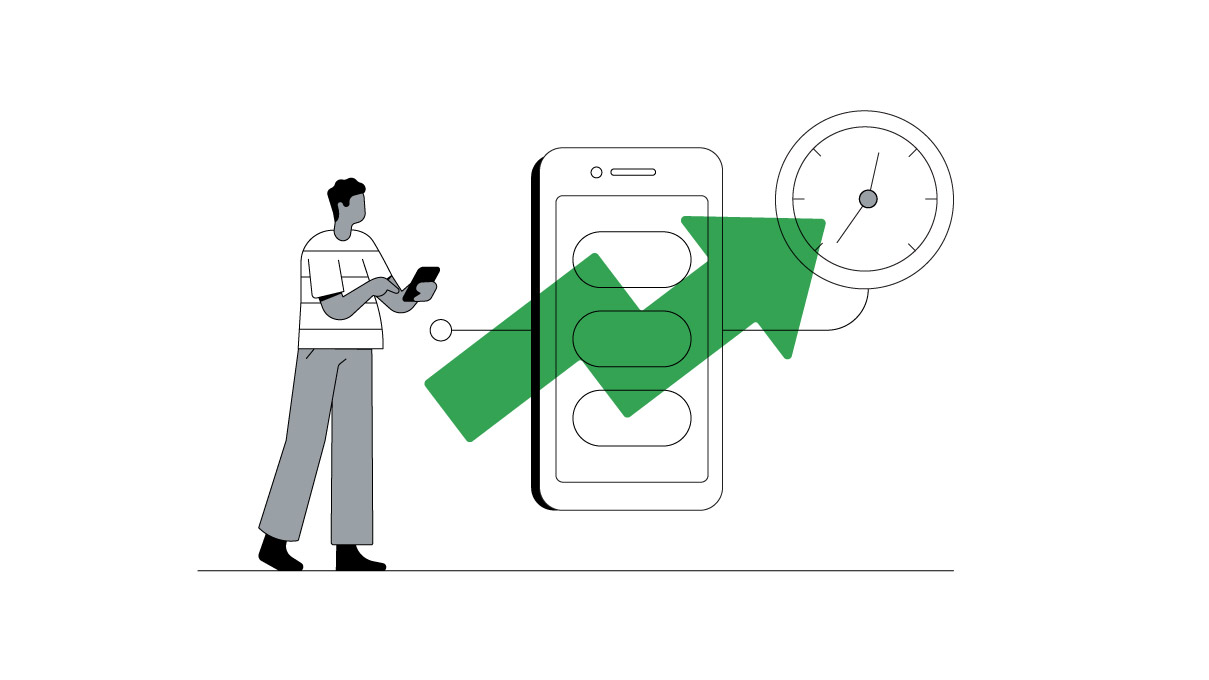How much time do you spend on your phone? If you’re like the average American, you may spend nearly one quarter of your waking hours on your smartphone, streaming videos, checking messages, or listening to music. But the fact is America has some of the most expensive data plans in the world — and the costs continue to rise. That poses a serious problem for users, but an opportunity for Comcast’s Xfinity Mobile, a new type of wireless service plan with a network of millions of Wi-Fi hot spots designed to help consumers save money on data.
Xfinity Mobile had a seemingly simple idea: give potential customers sticker shock by showing them how much their data actually costs them.
By leaning into data from videos on YouTube, Xfinity Mobile created the campaign “Data In Dollars.” The series of pre-roll six-second ads played before the video users were about to watch and showed them how much the video would cost to stream using data from their current cellular provider. For example, if someone was about to watch a five-minute sports clip, they might have been shown a sports-themed ad beforehand showing that the video they were about to watch would cost them $1.31 with their current cellular service provider.
The approach paid off for Xfinity Mobile. The brand experienced a 113% lift in brand interest, 3X increase in search, and has gained thousands of new customers since the campaign launched. The campaign went on to win the YouTube Works Grand Prix and Best Media Work awards and Cannes Lions awards. We spoke to the people behind “Data In Dollars” to see how they used data as the creative foundation for the campaign.
Break through a crowded category with a unique approach
Lisa Pickles, senior director of media strategy and investment at Xfinity
“Data plans are expensive. Most cellular data plans talk about using gigabytes, but most people don’t really know what that means in terms of their everyday use. And people are constantly on their phones streaming and watching videos, which often consume the most data.
“With a wireless category full of established brands that are extremely visible, we had to find a way to stand out. As a new entrant in a competitive category, we needed to show consumers why it was worth switching.
“We knew that people could save hundreds of dollars a year with Xfinity Mobile, but had to find the right way to tell them. Using these insights, we showed the value of our new service by literally putting a price tag on how much videos were costing them to watch on other providers.”
Lean into trends to inform how you use data
Tristan Graham, creative director at Goodby Silverstein & Partners
“People love to have interesting stories to share with friends, families, and coworkers that make them seem a little funnier or smarter. The most effective advertising recognizes this and arms people with a joke, quote, statistic, or story worth passing on. That was our intention with ‘Data In Dollars.’ We wanted to create something that would get people talking about Xfinity Mobile. Using trends, like unboxing videos, and popular topics on YouTube, like sports highlights, music videos, and makeup tutorials, we found out how much data was consumed by watching 2,000 of the most popular videos.
“Marketers always talk about using data to inform the creative approach, but this campaign flipped that on its head. We started with a creative idea, which determined the information we needed to execute the campaign. Data allowed us to tell a story. We showed people the cost of cellular data on their carrier to watch their upcoming video. But creatively, we went even further, shooting completely different commercials to match all of the most popular genres on YouTube. It was a lot of work, but it created a sense of ‘mass intimacy.’ Every part of every ad felt like it was made specifically for the person watching it.”
Make audience insights more actionable
Kim Thompson, executive vice president, managing director at Spark Foundry
“It’s important to make sure that the right message reaches the right audience at the right time to really drive action. To execute this campaign, we started with a lot of questions: What relates to an audience that’s always connected? What videos draw the most interest? Can we pinpoint specific wireless carriers? Can we reach people while they are using data in real time?
“Using Google data about video megabytes, we could determine how many megabytes would be required to watch certain videos. We then took the number of megabytes and used the available carrier costs to calculate the actual cost per video for more than 2,000 videos.
“We leaned into YouTube's ability to reach users based on their service provider. We then served them a contextually relevant six-second ad that quantified the data cost of the video they were about to watch. This approach was critical to precisely reaching people when it was most relevant.
“In today’s world, it’s as much about data as it is about a good idea. There is a symbiotic relationship between creative and media. Without having credible data, you may not see the success you want.”







